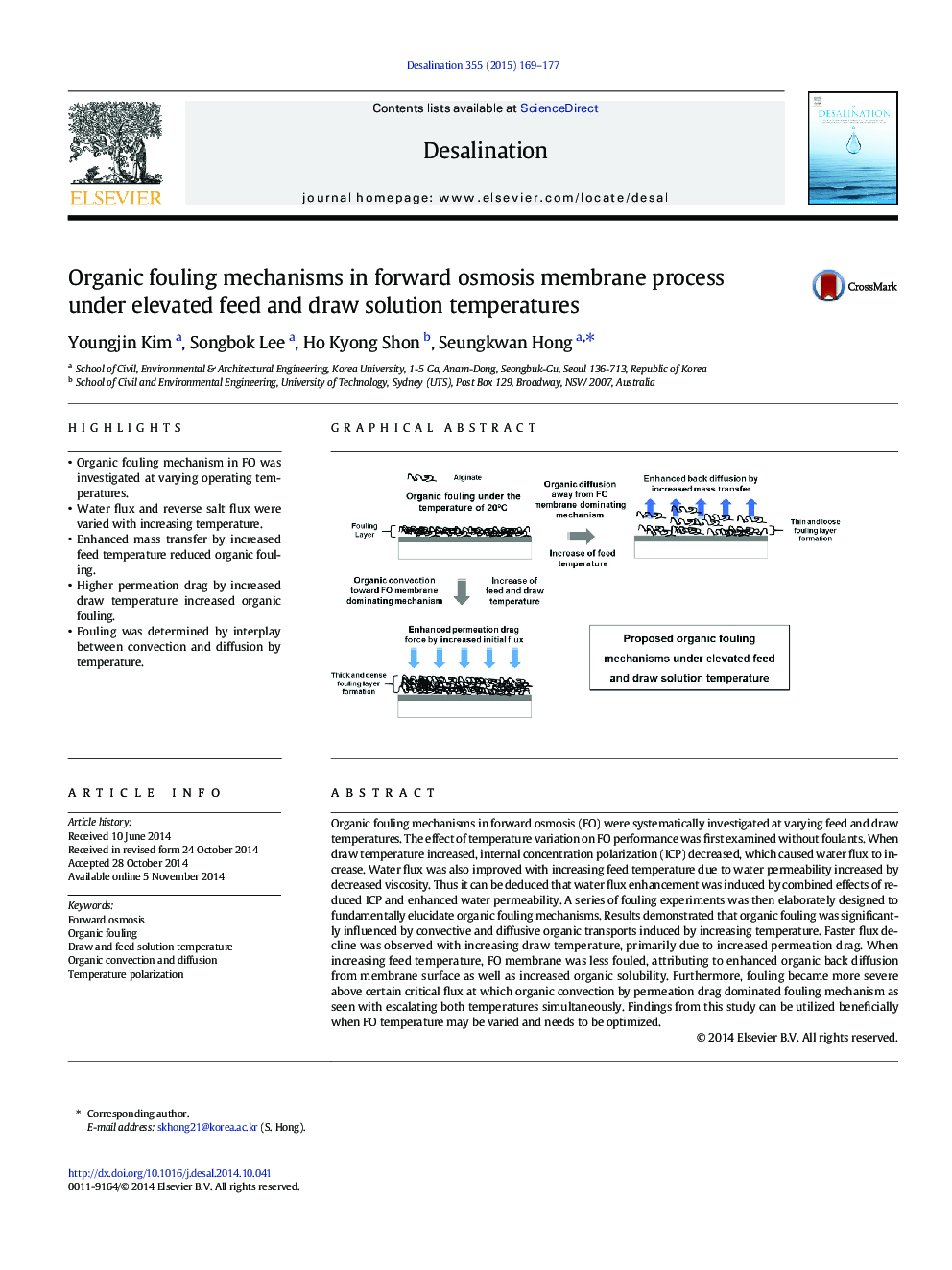| کد مقاله | کد نشریه | سال انتشار | مقاله انگلیسی | نسخه تمام متن |
|---|---|---|---|---|
| 623220 | 1455340 | 2015 | 9 صفحه PDF | دانلود رایگان |
• Organic fouling mechanism in FO was investigated at varying operating temperatures.
• Water flux and reverse salt flux were varied with increasing temperature.
• Enhanced mass transfer by increased feed temperature reduced organic fouling.
• Higher permeation drag by increased draw temperature increased organic fouling.
• Fouling was determined by interplay between convection and diffusion by temperature.
Organic fouling mechanisms in forward osmosis (FO) were systematically investigated at varying feed and draw temperatures. The effect of temperature variation on FO performance was first examined without foulants. When draw temperature increased, internal concentration polarization (ICP) decreased, which caused water flux to increase. Water flux was also improved with increasing feed temperature due to water permeability increased by decreased viscosity. Thus it can be deduced that water flux enhancement was induced by combined effects of reduced ICP and enhanced water permeability. A series of fouling experiments was then elaborately designed to fundamentally elucidate organic fouling mechanisms. Results demonstrated that organic fouling was significantly influenced by convective and diffusive organic transports induced by increasing temperature. Faster flux decline was observed with increasing draw temperature, primarily due to increased permeation drag. When increasing feed temperature, FO membrane was less fouled, attributing to enhanced organic back diffusion from membrane surface as well as increased organic solubility. Furthermore, fouling became more severe above certain critical flux at which organic convection by permeation drag dominated fouling mechanism as seen with escalating both temperatures simultaneously. Findings from this study can be utilized beneficially when FO temperature may be varied and needs to be optimized.
Figure optionsDownload as PowerPoint slide
Journal: Desalination - Volume 355, 1 January 2015, Pages 169–177
